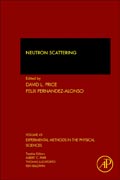
This work covers in some detail the application of neutron scattering to different fields of physics, materials science, chemistry, biology, the earth sciences and engineering. Its goal is to enable researchers in a particular area to identify aspects of their work in which neutron scattering techniques might contribute, conceive the important experiments to be done, assess what is required to carry them out, write a successful proposal for one of the major user facilities, and perform the experiments under the guidance of the appropriate instrument scientist. The authors of the various chapters take account of the advances in experimental techniques over the past 25 years--for example, neutron reflectivity and spin-echo spectroscopy and techniques for probing the dynamics of complex materials and biological systems. Furthermore, with the third-generation spallation sources recently constructed in the United States and Japan and in the advanced planning stage in Europe, there is an increasing interest in time-of-flight techniques and short wavelengths. Correspondingly, the improved performance of cold moderators at both reactors and spallation sources has extended the long-wavelength capabilities. Chapter authors are pre-eminent in their fieldSeminal experiments are presented as examplesProvides guidance on how to plan, execute and analyse experiments INDICE: Preface by the Editors 1. Introduction to neutron scattering, D.L. Price, K. Sköld, and F. Fernandez-Alonso 2. Neutron sources, F.J. Bermejo and F. Sordo 3. Experimental techniques, M. Arai 4. Structures of complex materials, S. Capelli 5. Large-scale structures, J. Penfold and I. Tucker 6. Dynamics of atoms and molecules (including relaxation phenomena and stochastic processes), G.J. Kearley and M. Johnson Appendix. Neutron scattering lengths and cross sections, J. Dawidowski et al.
- ISBN: 978-0-12-398374-9
- Editorial: Academic Press
- Encuadernacion: Cartoné
- Páginas: 568
- Fecha Publicación: 08/01/2014
- Nº Volúmenes: 1
- Idioma: Inglés
